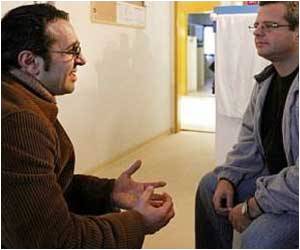African American adolescents who experience high levels of racial discrimination show cellular wear and tear, suggested a new research.

‘African American adolescents who experience high levels of racial discrimination show cellular wear and tear. But, a supportive family environment may protect against these negative physiological effects.’





Brody and colleagues wanted to know whether adolescents exposed to racial discrimination - a persistent experience for many African Americans - would show physiological weathering and whether the family environment might serve as a protective factor. "There were hints that families that check in about the goings-on and stress their teenagers are dealing with, talk about them, and share different ways of handling them would have teenagers whose cells and tissues would be less likely to show the biological costs of racial discrimination," explains Brody.
Brody and colleagues examined data from a total of 616 adolescents drawn from two longitudinal studies in rural Georgia. The participants were randomly selected from lists of students provided by schools in the rural communities and the researchers measured racial discrimination and family support over a period of three years when the participants were in late adolescence.
The adolescents completed a nine-item measure intended to gauge the extent of perceived racial discrimination, including any racially-based slurs, disrespectful treatment from community members, false accusations from business employees or law-enforcement officials, and physical threats experienced within the past year.
The participants' parents also completed surveys designed to assess parental emotional support, parent-child conflict, and disorganization in the home. These were combined into one measure such that high scores indicated family environments that had high levels emotional support and predictability and low levels of conflict.
Advertisement
Data from both samples revealed that the relationship between experiences of discrimination and cellular aging depended on the participants' family environment, in line with the researchers' hypothesis. For youth who came from families with low support, a high level of discrimination was associated with accelerated cellular aging. However, there was no link between discrimination and cellular aging among adolescents who came from supportive family environments.
Advertisement
"The findings in this study, and others involving other racial and ethnic groups, serve as a reminder that family environments affect not only characteristics of children and adolescents that we can see, but their reach also extends to their children's cells and tissues as well," says Brody.
Brody and colleagues plan to follow the participants over time to better understand how families, schools, and communities contribute to children's and adolescents resilience, both 'above and below their skin'.
Source-Eurekalert









